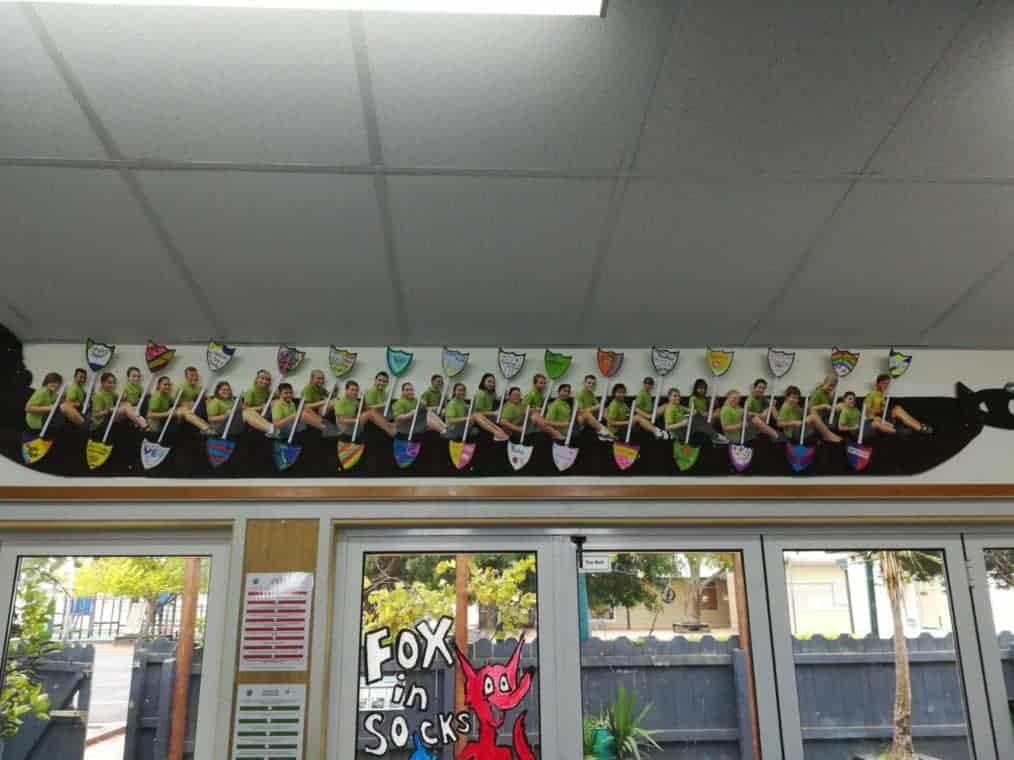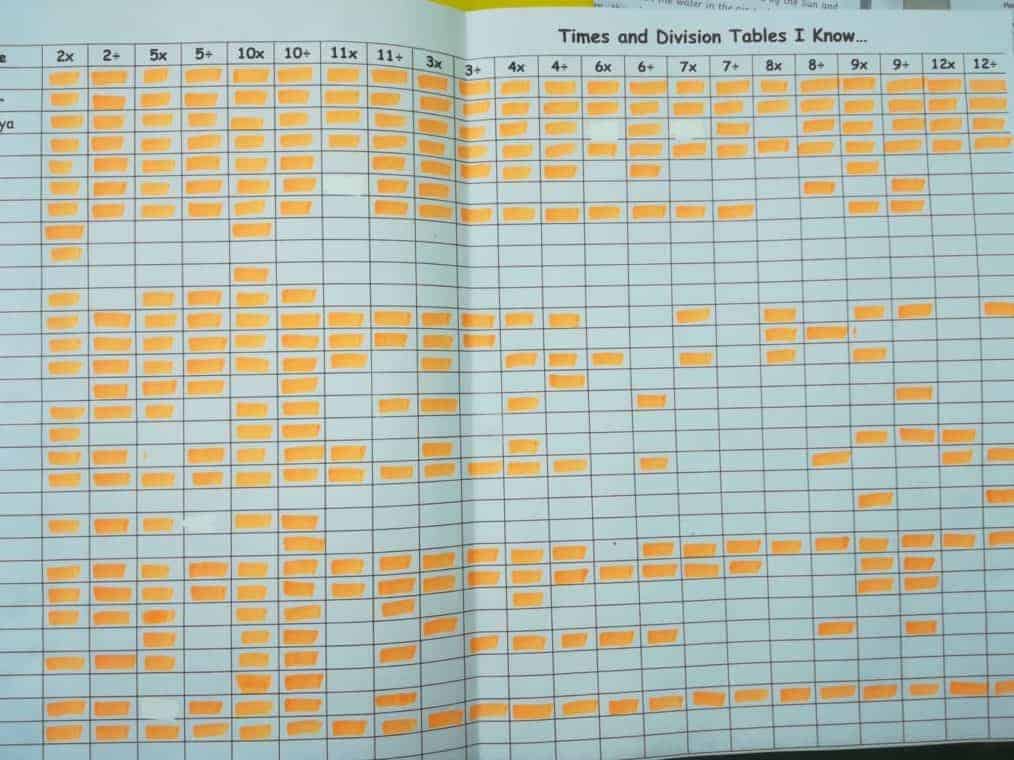Anja Hennig is a Year 6 teacher at Green Bay School in Auckland. From 2011 to 2013 she took part in Prof Christine Rubie-Davies’ High Expectation research project. Anja received professional development on how to become a high expectations teachers, and in particular how to develop a supportive classroom climate and how to use mixed ability groupings.
Developing a supportive class climate
Creating a warm, supportive classroom climate, that promotes peer cooperation and collaboration and is based on high levels of trust and distributed responsibility to students are central to high expectations teaching.
Building classroom unity and a shared vision
At the start of the school year Anja spends a lot of time getting to know her students and building a sense of cohesion and unity. Firstly, she co-develops with her students a class treaty, which is displayed on the wall and is frequently referred to throughout the year. The treaty not only outlines the rights and responsibilities of each member of the classroom but also explains what these look like in practice, providing more concrete examples for the students of the types of behaviours expected of them.
Anja also creates a class waka, which consists of a 2 metre long picture of waka on the classroom wall. Each child creates a paddle for the waka and on their paddle they write their aspiration or big goal for their life. This supports Anja to get to know her students, and she will often use a student’s goal and interests in the activities or books she sets for them. The waka becomes a metaphor for a strong, cohesive class culture and Anja will sometimes ask her students during the year: “Are well all paddling in the same direction? Are well all in the waka facing forward and moving in the same direction? Or are we currently paddling in different directions?”
Table groupings
At the start of the school year Anja allows students to sit wherever they want to in the classroom. She then initiates a whole class discussion where she asks the class to reflect on the importance of school and why they are here. This stimulates a conversation about learning and whether the students currently are sitting in the best spot for their learning. Following the discussion, students the have the opportunity to swap seats if they want to. Anja provides students with choice but also supports them to make decisions that are going to benefit their learning.
After 3 weeks Anja will run a sociogram using the free software on the website Sometics. Each student answers four questions online:
- Who do you like to play with?
- Who don’t you like to play with?
- Who do you like to work with?
- Who don’t you like to work with?
The programme then uses this information to produce a series of graphs on class dynamics and Anja can draw the configuration of her classroom and the programme provides her with three different seating arrangements. Anja then discusses these three suggestions with the class and they select a seating arrangement to trial. After a period of time, the class will reflect on whether the groupings are providing the best learning opportunities.
Circle time
In 2017 Anja started using circle time as a way to develop a positive class climate. Circle time has a number of components but at its heart it provides an opportunity each week for teachers to work with students to manage issues that affect the whole class, and to practice and build communication and social skills, problem solving abilities and other social and emotional competencies. Anja now considers circle time as the most important element for developing a positive and cohesive classroom culture, and in building positive change in students’ behaviour, confidence and empathy.
Mixed ability grouping
The use of mixed ability groupings struck accord with Anja’s teaching philosophy and provided her with the research evidence to back up her gut feeling about not using ability groupings.
Using mixed ability groupings does not preclude Anja from meeting the individual needs of each student, nor does it stop her from providing extra support to her priority learners. Rather, it prevents learners from being boxed into a particular group, and instead enables students to regularly work with a range of other students.
Mixed ability mathematics teaching
Anja begins the year by undertaking testing and needs assessment. She uses the data from these assessments to identify whole class gaps as well as gaps in individual students’ learning.
She will then offer teacher-directed workshops on particular skills. All students are invited to attend every workshops but students are able to choose whether they attend or not. Usually the students who need to come do attend, however, occasionally Anja will invite specific students to attend. Students are free to leave the workshop at any stage if they feel they already know the content or to join part way through.
Anja also runs extension workshops for students who are more advanced and she often gets intermediate students to come and take an extension group in maths.
Every maths lesson starts with a mixed ability problem that students work on collaboratively in their mixed ability table groupings. There is then a maths rotation, with students moving through the rotations in their table groupings rather than in ability groupings. Within each of the tasks there are different levels and children are able to choose the level that they work at. This encourages students to be responsible in and for their learning, and also to ask for help if they need it.
Anja spends a lot of time on at the beginning of the year is building a growth mindset among her students. Many students come into her class believing that they are dumb or that they can’t learn. Anja teaches them that everyone is able to learn and that everything can be learned. It’s just a case of breaking learning down into manageable steps.
At the heart of Anja’s practice is a belief in giving choice and responsibility to students, empowering them and placing them in charge (but always with teacher and parental support) of their own learning.
Anja’s Reading Programme
Anja’s reading programme demonstrates the implementation of high expectations teaching in a particular learning area.
All year, Anja runs the 40 Book Challenge, developed by Donalyn Miller in The Book Whisperer All children have the goal of reading 40 chapter books across the year. There are class activities around particular genres of books as well as a celebration at the end of the year of students reaching their goals.
For one block a day 5 times a week, students rotate in their table group through core curriculum activities. With students engaging in independent work it gives Anja the opportunity to test or sit with students, either individually or in small groups, who have specific learning needs. Reading tasks can consist of School Journals for topic related tasks, plays or general comprehension and there is always a choice of school journals at various levels. Anja also incorporates magazines and research based tasks.
Students with specific learning needs are identified and receive an individual programme, which can consist of PROBE kit activities for reading strategies, study ladder comprehension texts (online) and/or the Lexia programme. They will do some of those tasks at school but most of them at home. This makes a strong connection between school and home for accelerating learning in reading. Parents are informed about their child’s learning and have a meeting with Anja where they are offered specific strategies to support their child’s reading at home.








